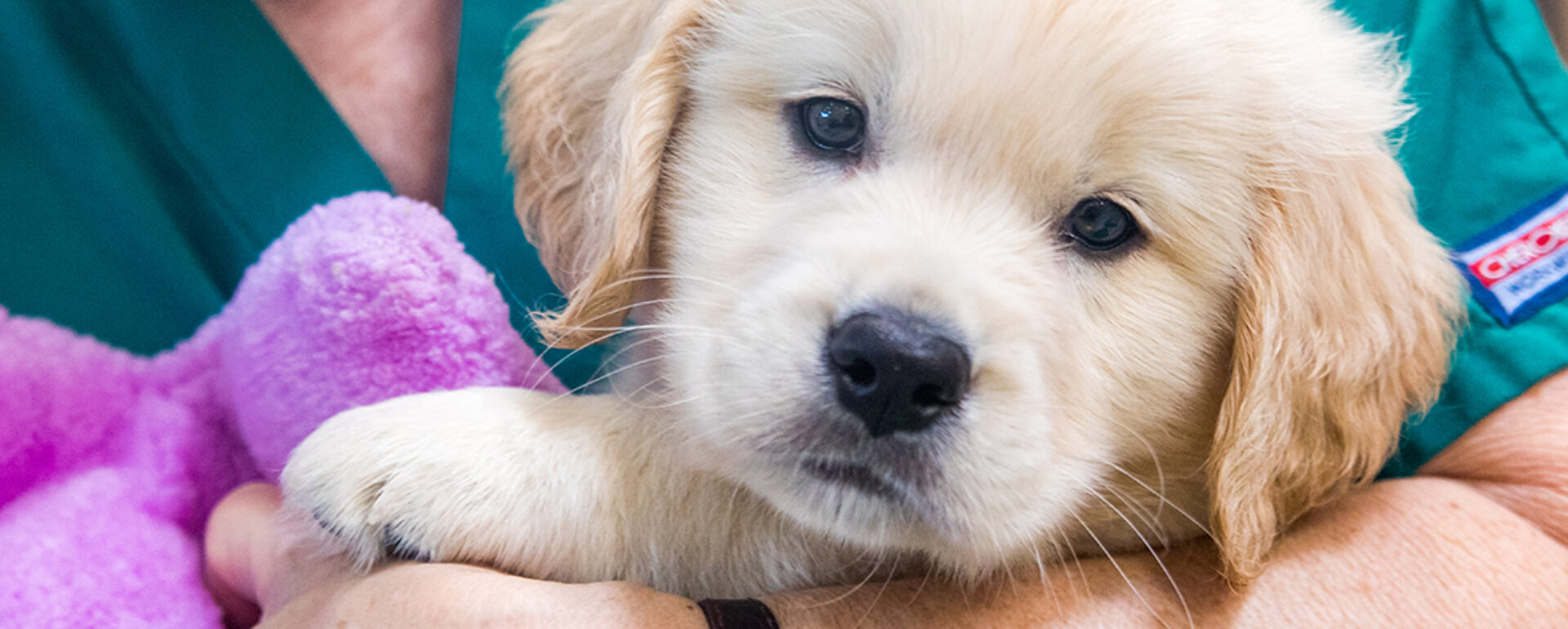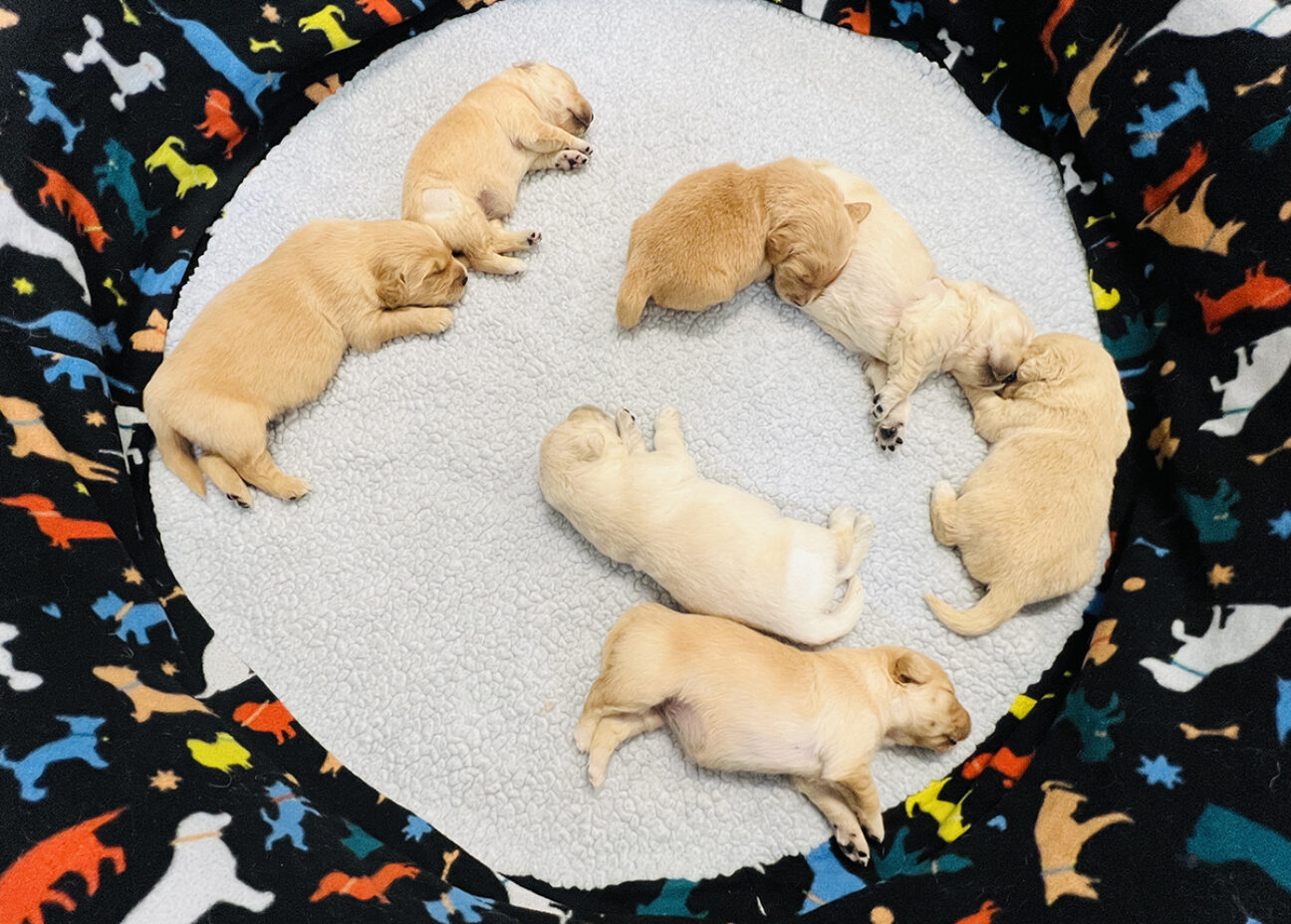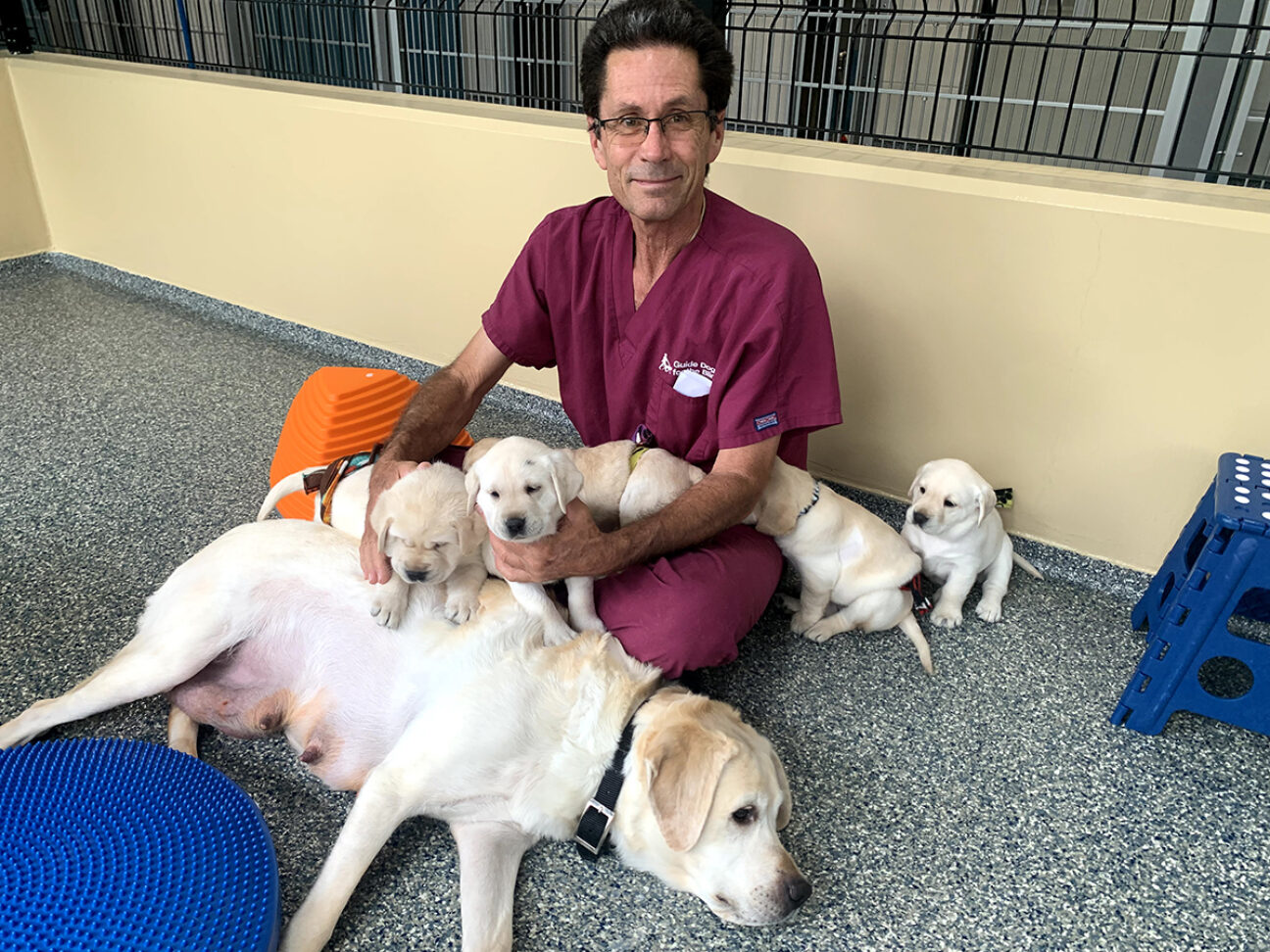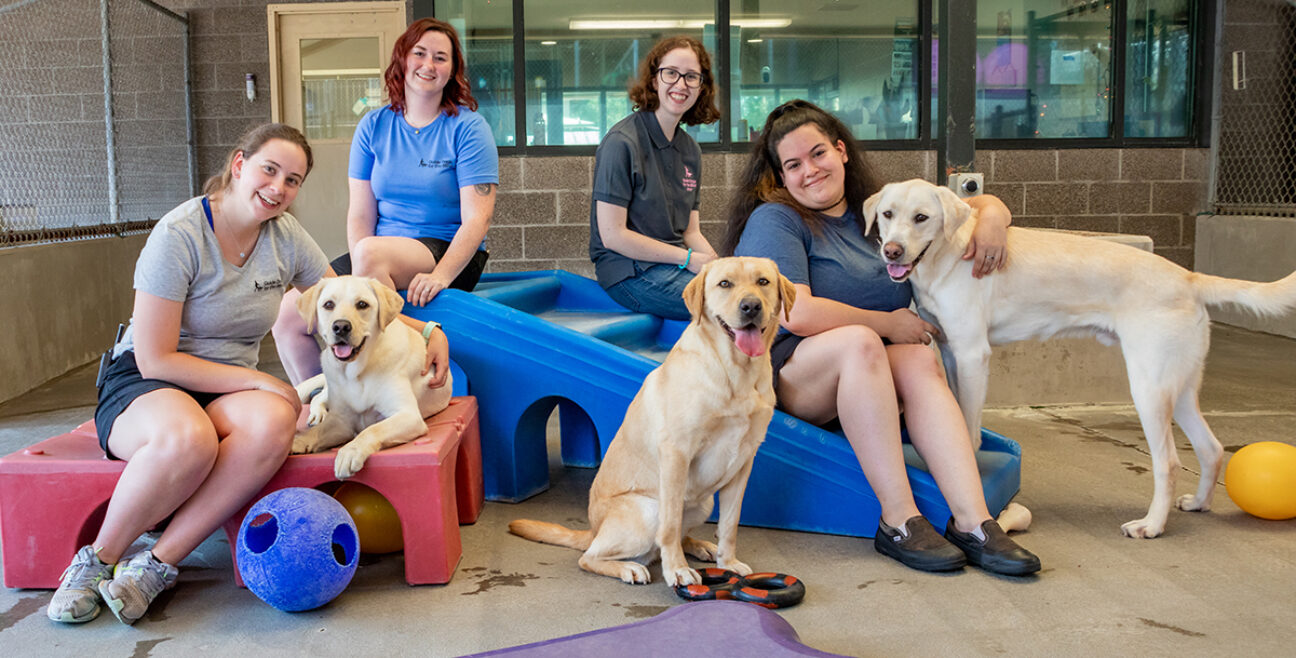
Canine Welfare
Providing a nurturing environment for our dogs and puppies.
Brood, Neonatal, and Puppy Care
Welcoming Puppies Into the World
On any given day, the Nursery of Guide Dogs for the Blind's Puppy Center on our California campus is buzzing with the fuzzy faces, soulful brown eyes, and wagging tails of newborn puppies. Our professional canine welfare neonatal staff welcomes approximately 800 pups into the world each year, all of which are born into a warm and nurturing environment under round-the-clock supervision. Our 24-hour a day attention allows for:
- Whelps any time of day or night ("whelp" is the canine term for "birth")
- Care and feeding of newborns and their mamas
- Efficient administration of medications
- Oversight of veterinary treatment
- Ongoing puppy socialization
With all of this attention, guide dog puppies can't help but get off to a good start. Staff and volunteers ensure that all of their earliest needs are met, from health care and nutrition to socialization and human interaction.
Long before our puppies are even born, they have been receiving the utmost in care while they are in the womb. Pregnant female breeding stock dogs are brought to our California campus about a week before their litters of puppies are due (gestation for dogs is 63 days). To prepare for whelping, they are welcomed into our Puppy Center where they are cared for in comfortable private kennels that contain plastic wading pools where they will give birth. The Nursery is heated and cooled with an air exchange system that maintains clean air and an even temperature.
During the whelp, the canine welfare neonatal staff is present to monitor the labor and delivery and assist when needed. This assistance may involve:
- Assessing fetal heart rates
- Qualifying uterine contractions
- Clamping bleeding umbilical cords
- Feeding females tired from a long whelp

Puppy Center Nursery and Puppy Pod
The newborn puppies are weighed daily for the first five to seven days of their lives to ensure they are gaining weight properly. If a puppy's growth is lagging, the pup may be bottle-fed or tube-fed with supplemented milk or formula.
The puppies spend their first three weeks in the wading pool with their mother and littermates to nurse. At 3 weeks of age, the mom and the litter are moved from the Nursery to the Puppy Pod where the wading pool is removed, the pups start eating solid food, and are slowly weaned. They are fed a high-quality dry puppy food softened with warm water three times each day.
Throughout this time, both the mama dogs and the pups receive hands-on nurturing and care. The pups, starting at just a few days old, participate in age-appropriate enrichment and socialization activities where they learn to enjoy humans in their personal space and get to explore new environments with the mentorship of their mothers. The mamas get exercise and play time, both with - and without - the pups.

Young Heroes Academy
Once the pups have been weaned by 6 weeks of age, the moms are able to return to the homes of our volunteer breeder custodians. The growing pups are moved from the Puppy Pod to the Young Heroes Academy of the Puppy Center where they share stalls with their littermates. It's here that they participate in additional enrichment activities, play time, and socialization experiences. Our volunteer puppy socializers and staff continue to gently introduce the pups to new sights, sounds, and situations, so they will gain confidence and experience. When the puppies are about 8 weeks old, they are ready to be placed with volunteer puppy raising families living throughout the Western states. Learn more about puppy socialization here!
How do we keep track of all the puppies?
A shaved area on the shoulder and/or hip identifies each puppy after birth; this shaved area is used for identification until the pups are weaned. They eventually receive a microchip inserted under the skin by the shoulders. The microchip can be scanned by any veterinarian or rescue organization and will alert them to the fact that the dog is from Guide Dogs for the Blind. Additionally they will have a collar with specific Guide Dogs for the Blind information, including a short unique identification number. Prior to being placed with a volunteer puppy raiser, each puppy is given a name; all littermates are given names that start with the same letter of the alphabet, and no active dogs in our program can have the same name.
Adult Dog Care

Our adult dog kennels see many different program dogs: guide dogs in various stages of their formal training; dogs being boarded; breeding stock dogs; and dogs awaiting placement in adoptive homes.
The bustling kennel complexes on both of our campuses are full of big, brightly colored play structures, kinetic and interactive hanging toys, and sometimes even wading pools when the weather is hot. Our kennels are far from sterile or boring! All of these elements go into the fun that makes up our kennel enrichment program, which serves to positively stimulate and engage the dogs during their stay with us. And although the theories behind the kennel enrichment program are firmly rooted in fun, they are also based on solid research.

What purposes does the kennel enrichment program serve?
- The program provides varied opportunities for human/dog interaction with staff. We use agility equipment (such as tunnels and walk-over ramps) to allow the dogs successful experiences through non-training-related activities, improve their physical coordination and confidence, and heighten their body awareness.
- Our dogs have supervised access to a variety of toys (including interactive wall-mounted toys), and are introduced to different odors, sounds, and visual stimulation in the kennels. Stuffed Kongs and frozen treats serve as interactive goodies; spray-on scents give the dogs' noses new smells to explore; piped-in music serves to soothe and sound like home.
- Play structures (tunnels, barrels, plastic play houses, plastic baby pools) and crates or plastic "igloos" in runs create micro-environments for the dogs, giving them choices that can be either more stimulating or feel more secure for them than their basic kennel stalls. All are designed to be environmentally interesting and, in some cases, functional (i.e., grooming tables mounted over barrels in which the dogs can play).
- The enrichment program is designed to give dogs a chance to expend excess energy in a positive way and reduce barking, repetitive behaviors, and other negative activities that might result from being in a kennel environment.
